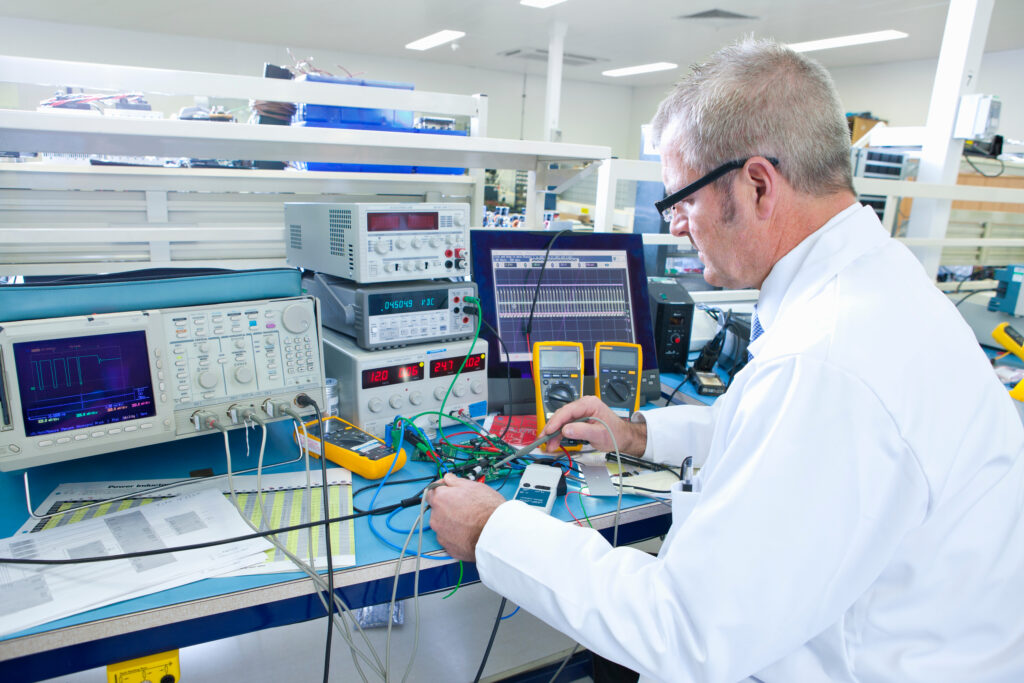At a Glance: Biefeld-Brown Effect Replication
The Biefeld-Brown Effect, once dismissed as fringe science, is now attracting renewed attention. Modern Biefeld-Brown Effect replication is underway in labs and independent workshops around the world. By combining advanced materials, precision electronics, and high-vacuum testing, today’s researchers are reexamining Townsend Brown’s claims. Their results continue to challenge conventional propulsion theory and keep electrogravitics alive as a field worth exploring.
Read time: 6.5 minutes
Introduction: Biefeld-Brown Effect Replication
In 1956, Townsend Brown demonstrated thrust in a French vacuum chamber, eliminating ion wind as the explanation for his asymmetric capacitors. That milestone should have settled the argument, but it only opened new debates. Decades later, a growing number of innovators are testing his ideas again. Modern Biefeld-Brown Effect replication seeks not only to confirm Brown’s work but also to explore its potential for propulsion in space and beyond.
Modern Biefeld-Brown Effect Replication Experiments

Today’s most visible replication efforts are led by independent researchers working outside of mainstream institutions. Groups such as Alt Propulsion Labs (APEC) have become a hub for experimenters to share designs, data, and demonstrations. Figures like Mark Sokol, Andrew Aurigema, and Jeremy Rys have conducted live-streamed experiments that place asymmetric capacitors in controlled vacuum conditions.
Their setups often mirror Brown’s original designs but with modern upgrades. In these experiments, capacitors are suspended in vacuum chambers, charged with high-voltage power supplies, and carefully observed for thrust. When movement is detected in conditions where air currents cannot exist, it forces a fresh look at Brown’s original claims. Each successful Biefeld-Brown Effect replication fuels renewed discussion about whether electricity and gravity are more closely linked than physics currently accepts.
Advances in Biefeld-Brown Effect Replication
Brown worked with the materials available in the 1920s and 1950s: cloth dielectrics, mineral oil baths, Bakelite, and varnish. While his ingenuity was remarkable, his tools limited the precision of his results. Modern researchers have the advantage of high-performance ceramics, advanced dielectrics, and digital measurement systems capable of detecting micro-newtons of force.
Vacuum technology has also advanced dramatically. Brown tested down to one-billionth of atmospheric pressure, but today’s replication efforts can reach ultra-high vacuums with stable controls. This allows researchers to eliminate sources of error and isolate the effect more clearly. Precision high-voltage power supplies, real-time monitoring equipment, and laser measurement systems add another layer of credibility.
These advances mean Biefeld-Brown Effect replication is no longer reliant on hand-built measurement tools or visual estimates. Instead, replicators can gather precise, verifiable data that moves the discussion out of the realm of anecdote and into the language of science.
Why Biefeld-Brown Effect Replication Matters
The persistence of these modern experiments shows that electrogravitics is not just a relic of Brown’s imagination. It is a field that continues to attract attention because the potential impact is enormous. Fuel-free propulsion systems would revolutionize space travel, making exploration more sustainable and cost-effective. Silent, low-energy systems could transform aviation or even terrestrial transportation.
Of course, the road from laboratory replication to practical application is long. Many experiments today are small-scale, producing thrust at levels too minor for immediate engineering use. But so were the first demonstrations of electricity, magnetism, and radio. Progress often begins with phenomena that seem impractical at first glance. The current wave of Biefeld-Brown Effect replication ensures that the questions Brown raised remain alive for future innovators to answer.
“The value of an idea lies in the using of it.” – Thomas Edison
What We Know About Biefeld-Brown Effect Replication
Townsend Brown’s early patents, his sealed dielectric devices, and his famous French vacuum tests created the foundation for electrogravitics. His work demonstrated that asymmetric capacitors could move in conditions where airflow could not explain the results. Today, researchers around the world are continuing that work, confirming that the effect is reproducible and measurable.
While mainstream acceptance has not yet arrived, Biefeld-Brown Effect replication proves that Brown’s discoveries are not just history. They are a living field of inquiry, moving forward with each new experiment. The controversy remains, but so does the promise. As long as experimenters continue to test and refine, the legacy of electrogravitics will remain part of the conversation about the future of propulsion.
What breakthroughs could emerge if mainstream science took a closer look at modern Biefeld-Brown Effect replication instead of dismissing it?
Let’s Talk Discovery
Chasing the unanswered questions of electrogravitics is exciting, but also complex. By connecting with others who are equally curious, you open the door to fresh perspectives and new breakthroughs.
I work with researchers and science enthusiasts who are serious about refining their work and thinking through the challenges that come with charting new ground. Sometimes that means revisiting fundamentals. Sometimes it means asking better questions together.
📩 If you’re looking for a mentor’ or simply someone who understands the long arc of curiosity’ I’d be honored to connect.
You can connect with me on Linkedin, schedule a conversation or shoot me an email at 👉 letstalk@larrydeavenport.com.
Breakthroughs don’t always happen in the lab. Sometimes, they begin with a shared conversation.
About the Author

Larry Deavenport is a researcher, speaker, and educator with more than 40 years of experience exploring the frontier of electrokinetics, which he calls energy in motion. As founder of Deavenport Technology, he is dedicated to equipping innovators, researchers, and engineers with the clarity, tools, and mentorship they need to transform scattered theories into working prototypes.
Larry’s work focuses on bridging the gap between curiosity-driven experimentation and practical application. His teaching combines structured principles, hands-on demonstrations, and one-on-one guidance to help learners refine breakthroughs and accelerate discoveries. Through his keynotes, workshops, mentoring programs, and his two signature master courses, Larry inspires a new generation of pioneers to explore advanced gravitics and motion-based energy systems that align with natural forces and reduce environmental impact.
Passionate about both discovery and education, Larry continues to share his research and insights at conferences, in collaborative forums, and through his growing platform at Deavenport Technology. His mission is to guide bold thinkers who are ready to move from possibility into progress, shaping the future of sustainable energy and redefining what is possible.
References
Brown, T. T. British Patent No. 300,311. “A Method of and an Apparatus or Machine for Producing Force or Motion.” Filed 1928, granted 1929.
Thomas Valone. Electrogravitics Systems: Reports on a New Propulsion Methodology. Integrity Research Institute, 2002.
Paul LaViolette. Secrets of Antigravity Propulsion: Tesla, UFOs, and Classified Aerospace Technology. Bear & Company, 2008.
Alt Propulsion Labs (APEC). Ongoing experimental demonstrations and community discussions. https://altpropulsion.com
Mark Sokol, Andrew Aurigema, Jeremy Rys. Live experimental replications of the Biefeld-Brown Effect in vacuum environments (documented via APEC livestream archives, 2020–present).
Campbell, R. (2008). The Townsend Brown Electro-Gravity Device. Nexus Magazine, April–May edition.



